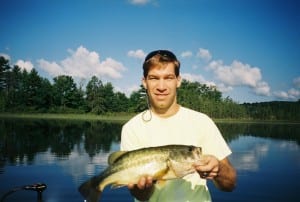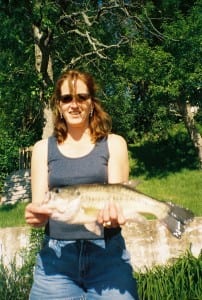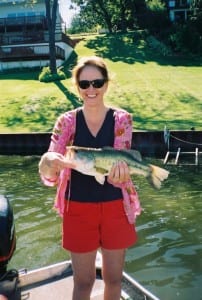Fish & Wildlife
See the dozens of unique artificial fish habitat models, fish attractors and fish cover used at fishiding.com, the industry leader and only science based, man made and artificial fish habitat, proven to provide all fish with cover they prefer to prosper.
Montanans, though battered by weeks of high water and flooding, haven’t forgotten to wonder how the state’s fish are faring judging by the questions Montana Fish, Wildlife & Parks is receiving.
FWP officials say the answer is generally good—in fact some fish species are already taking advantage of the high water.
“Fish are well adapted to survive flooding, though they can sometimes be stranded when high water recedes, depending on where they took refuge,” said Bruce Rich, FWP fisheries bureau chief.
Remember, natural streams and rivers of the not too distant past were a substantially wilder, more transformative force on the landscape than they are today. They carried soil, nutrients, and heavy debris for miles, cut new channels during spring runoff, reseeded cottonwood trees along their river banks and scoured stream bottom gravels providing high-quality spawning and rearing habitat for fish. Some springs it is hard to imagine all this stream activity, but not this year.
“In high water like we’re seeing this year, fish generally move to the margins of the river for refuge—to backwater areas, or warmer, less turbid side channels or tributaries,” said Mark Lere, FWP’s Future Fisheries Improvement Program coordinator. “Fish might even move out onto the floodplain when it is inundated, then back into the backwaters and side channels as the water recedes.”
Lere said as water spreads out over the floodplain it tends to warm and pick up nutrients, providing great growing conditions for everything in the aquatic system–algae, insects, fish and other aquatic creatures.
Even when water is running muddy and fast, fish are able to orient themselves to the main channel and find food. Their body shapes and musculature help, but so does a sophisticated set of organic navigation tools.
“Fish have a sensory mechanism called the lateral line system that they use to navigate,” said Amber Steed, FWP fisheries biologist in Kalispell. “It is made up of external pores running from front to back through the fish’s midsection that allows the fish to sense movement and vibration, and changes in flow and water pressure.”
This system is a sense organ somewhat analogous to a human’s senses. Most amphibian larvae and some adult amphibians have a type of lateral organ too.
Fish reproduction also benefits as a result of high spring runoff. Fish deposit eggs in river gravels in what are called “redds.” Heavy runoff flushes mud and debris out of these gravels so fresh, clean water flows through increasing the oxygen available to the embryonic fish that will develop.
As Montanans everywhere cope with high water and its after effects, it may be some comfort to anglers and others to know that there will be some future benefits.
High FLows On Prairie River Systems And Warm Water Fish
By Diane Tipton, Montana Fish, Wildlife & Parks Statewide Information Officer
Montana’s prairie stream systems generally have low annual flows. This spring will go on record as an exception. High water in eastern Montana is making life difficult in area communities at the same time that it may be enhancing conditions for some of the state’s warm water fish, including the endangered pallid sturgeon.
At least five radio-tagged adult pallid sturgeon are using the Milk River, say Montana Fish, Wildlife & Parks biologists tracking the pallids. Biologists have determined that at least one adult male pallid sturgeon has traveled 36 river miles up the Milk from its mouth this spring, the furthest a pallid has ever been documented upstream in this river.
Another of the pallids in the Milk is a female that is expected to spawn this year. Female pallid sturgeon spawn for the first time at about 20 years of age, and then every two to three years after.
“A naturally spawning pallid sturgeon in the Milk or Missouri River would be very big news,” said Tyler Haddix, FWP fisheries biologist at Fort Peck on the pallid sturgeon team. Although FWP documented natural spawning in the Yellowstone River in 2009, it has not been documented in either the Missouri or Milk Rivers.
Pallid sturgeon have been on the federal list of threatened and endangered species since 1990. FWP believes that only about 150 wild produced adult pallid sturgeon survive in the Yellowstone and lower Missouri River complex. FWP and U.S. Fish and Wildlife Service have been producing hatchery-reared pallid sturgeon and stocking them into the Missouri and Yellowstone rivers since 1998.
“Of all the adult pallid sturgeon that have radio tags—about 45 fish—we’re seeing a significant proportion using the Missouri River this year compared to any previous year we’ve studied these fish,” Haddix said. “That is a direct result of high, muddy water.”
Other benefits of high water and flooding on the flatlands of eastern Montana include increased production of aquatic insects and other fish food sources.
“Nutrients increase and water temperature goes up—resulting in increased fish growth and improved winter survival,” Haddix said.
Increased production and good survival could mean anglers will see more paddlefish, shovelnose sturgeon, sauger, and channel catfish in a few years, he said.
“In 2010 on the Milk, another high-water year, FWP documented the best production of paddlefish in the Milk River and shovelnose sturgeon in the Missouri River in the 11 years that we have been intensively looking at larval fish production,” Haddix said. “This year could be another high production year for these two species.”
Spring 2011 may go down in the record books for a variety of reasons—some of them tragic. It is good to know the record-breaking events we’ve observed this spring may have some positive effects—for Montana’s fish populations.
-fwp-
SIDEBAR:
Q. How do fish navigate?
A. Fish have adapted to the need to navigate high water in spring and to flooding rivers. Many fish species have a sensory mechanism to orient themselves and to detect what is going on in their environment called the “lateral line.” This system allows fish, when water recedes from an area, to sense changes in flow and water pressure.
The lateral line provides information to help a fish orient itself to its environment similar to how a human’s sensory systems enables a person to know they are changing elevation, or that someone is standing right behind them.
Q. What are the main benefits to fish of the spring runoff and occasional flooding?
A. Fish benefit from high water and flooding in multiple ways.
1. High water redistributes gravel otherwise unavailable to fish in other parts of the system and scours away silt covering the gravel fish need to spawn. Many fish species in Montana need clean, silt-free gravels to spawn.
2. Runoff typically introduces nutrients to the river system that feed algae, plants, and insects which in turn feed the fish that live there.
3. Other fish habitat-enhancers, such as root wads, rocks, whole trees, and more may be brought into the river system and distributed during high runoff. These habitat-enhancers are important to fish as refuges from the heavy flows, to avoid predators, feed, over winter and rear young.
4. Runoff in also a cue that it is spring spawning time for fish species such as cutthroat trout, large-scale suckers, rainbow trout and other species.
 A $1.6 MILLION fish passage was to be built at the east end (right) of the Bridge Street dam in Grafton as part of Ozaukee County’s Milwaukee River fish habitat restoration project. The plan, however, has been rejected by the Department of Natural Resources.
A $1.6 MILLION fish passage was to be built at the east end (right) of the Bridge Street dam in Grafton as part of Ozaukee County’s Milwaukee River fish habitat restoration project. The plan, however, has been rejected by the Department of Natural Resources.






